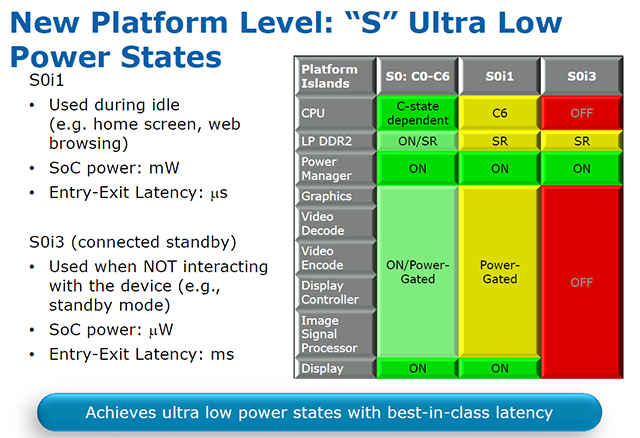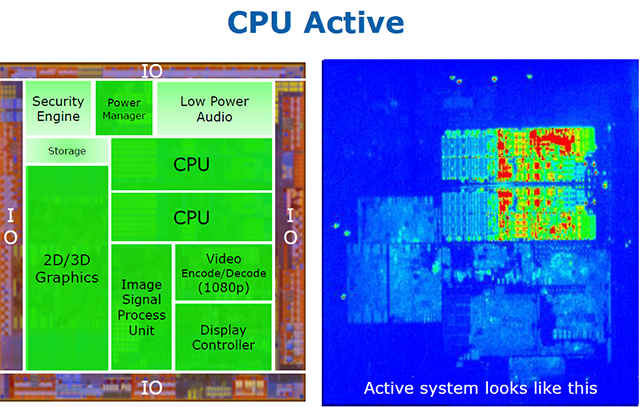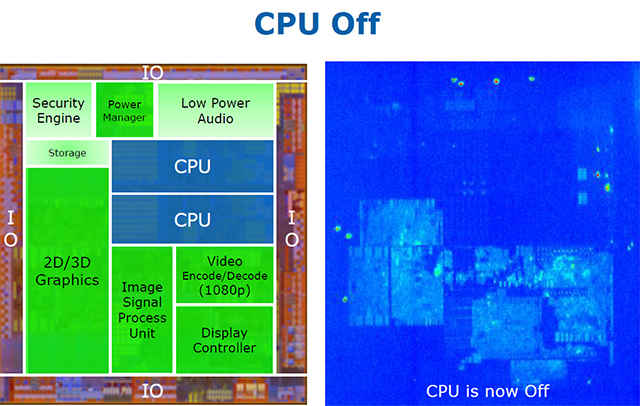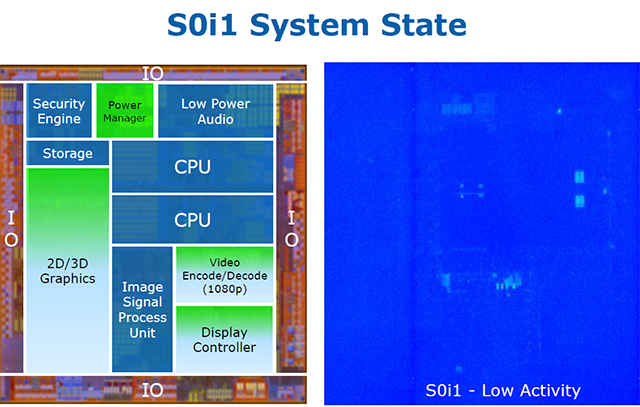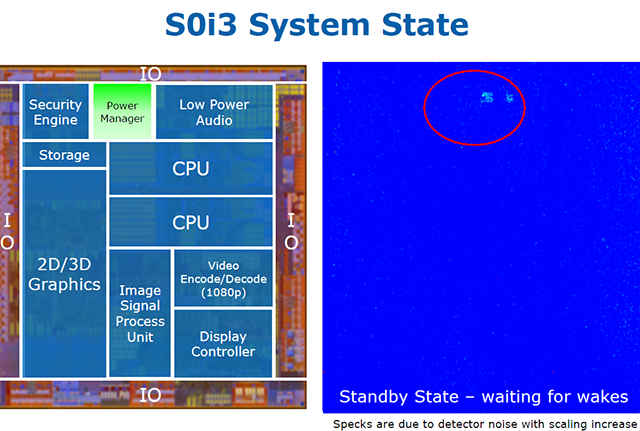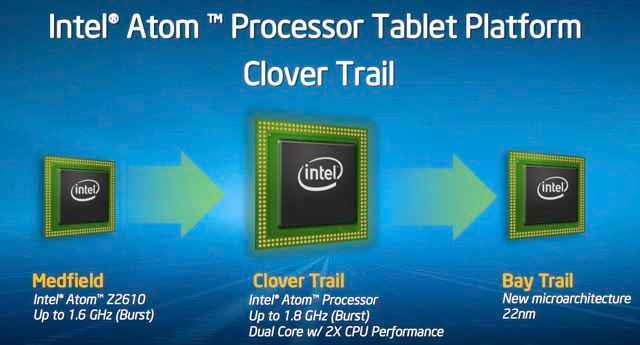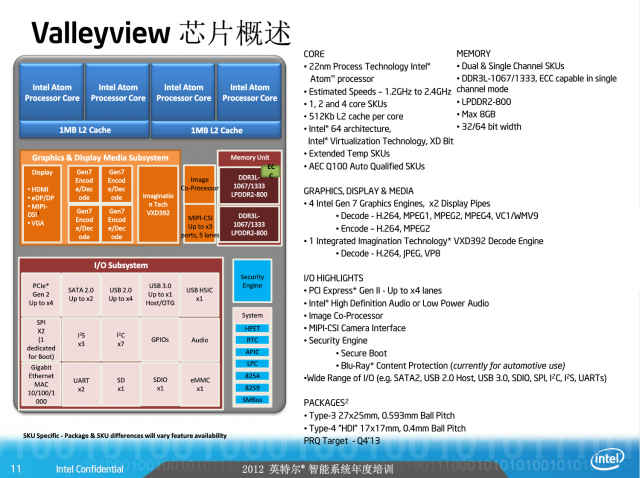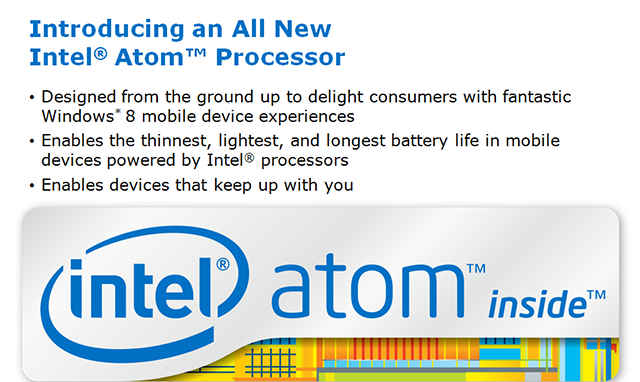Intel debuts Clover Trail for tablets, launches new Atom Inside brand
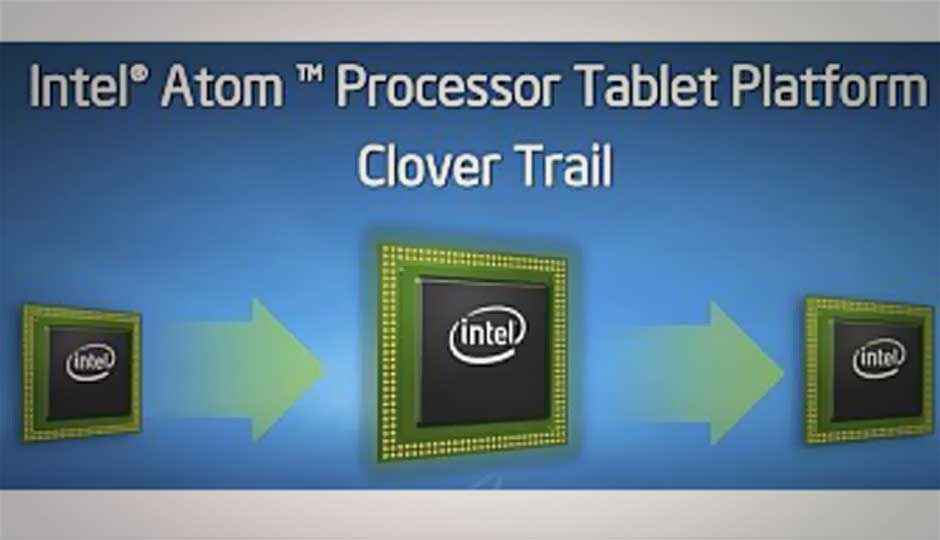
Intel is launching its next-generation Clover Trail platform. The new Intel Z2760 is a dual-core, quad-threaded device clocked at up to 1.8GHz, with support for up to 2GB of RAM and graphics provided courtesy of a single PowerVR SGX545 core. Chipzilla expects to see wide adoption from multiple partners, with a host of tablets expected to launch simultaneously with Windows 8.
The new SoC is closely related to Medfield, Intel’s 32nm smartphone platform that we reviewed earlier this year, but there are a few differences between the two. Certain subsystems have been improved, and the new SoC incorporates advanced power states and is capable of fine-grained power management beyond what we’ve seen in other Intel chips to date.
Here’s what the various power states look like under thermal imaging:
By dropping into Si03, the system can remain in what Intel calls connected standby, reducing power consumption to absolute minimal levels without completely shutting off.
Next page: OK, that’s cool, but does it matter?
Copyright © 2010 Ziff Davis Publishing Holdings Inc
Why Clover Trail matters
Today’s news has been a long time coming. It’s been 4.5 years since Intel launched the first Atom processors and detailed its plans for a next-generation ecosystem of handheld x86 devices with lower power consumption and better performance-per-watt than any modern Pentium or Core 2 Duo. Intel’s idea for a MID (Mobile Internet Device) never caught on, but the first Atoms drove the adoption of netbooks by popularizing the idea of a low-cost computer with far more battery life than anything else on the market.
Despite this enormous initial success, Intel’s initial plans to move into the low-power device market were stymied. MIDs didn’t appeal to customers and the tablet market was barely a footnote to Dell and HP’s primary business. The arrival of the iPad changed all this, and caught the vaunted Wintel alliance badly off guard. Intel, at least, had a tablet-capable processor thanks to the ill-fated Moorestown, but there were no Windows versions worth pairing with it.
By CES 2011, Android and ARM were the talk of the show. HP, Motorola, RIM, Sony, Samsung, Toshiba all had tablets (or plans for tablets) and were planning an all out assault on the iPad. Conventional wisdom predicted that Microsoft’s Windows 8 was critically behind the curve, Intel couldn’t match ARM’s power efficiency, and the Wintel alliance was in serious trouble. The Android Tablet Armada sailed out to battle Apple…
…and mostly sank, with the Kindle Fire and Asus’ Transformer as modest exceptions. With Android thoroughly trounced, OEMs like Dell, HP, Lenovo, and Asus have looked to Windows 8 to reinvigorate their products. Windows RT may support ARM, but it’s been clear for quite some time that ARM tablets are second-class citizens in the Windows 8 ecosystem. They won’t have access to the desktop, Windows Media Player, certain video codecs / formats, and a variety of other tools. They’re also expected to be cheaper than x86 Windows 8 devices, but major OEMs aren’t going to bet their futures on ARM support, at least not yet.We’re going to see some Ivy Bridge tablets and one iteration of Microsoft’s Surface is powered by a Core i5-class processor, but these are higher-end systems that we expect will target the upper end of the market. The workhorse tablets that PC manufacturers are hoping to move in volume will often rely on Clover Trail. If these devices fare well, it will give traditional PC vendors a chance to win new business in a market that’s been owned by Apple, Amazon, Samsung, and a handful of other companies. It could boost the adoption of Microsoft’s Windows Phone platform; W8 and Windows Phone 8 share a great many underlying features.
Next page: Valleyview is next up, plus Atom Inside
Copyright © 2010 Ziff Davis Publishing Holdings Inc
We’re going to see some Ivy Bridge tablets and one iteration of Microsoft’s Surface is powered by a Core i5-class processor, but these are higher-end systems that we expect will target the upper end of the market. The workhorse tablets that PC manufacturers are hoping to move in volume will often rely on Clover Trail.
If these devices fare well, it will give traditional PC vendors a chance to win new business in a market that’s been owned by Apple, Amazon, Samsung, and a handful of other companies. It could boost the adoption of Microsoft’s Windows Phone platform; W8 and Windows Phone 8 share a great many underlying features
Next year’s 22nm Intel SoC will push the envelope even farther…
Leaked slides several weeks ago indicate that Valleyview will be the first out-of-order Atom core and the first tablet SoC to integrate Intel’s own graphics solution. It may be a year before we see the new Atom core, but it should arrive just as Windows 8 hits its stride in the general market.
That’s assuming it does. Windows 8 is a risky bet for Microsoft, and OEMs are betting on Clover Trail as the best vehicle to take that bet to market. If it fails to catch on, Intel’s chances of winning more smartphone designs and establishing itself as a player in low-power devices could suffer. If it succeeds, Qualcomm and Nvidia could find themselves neatly confined to the low end of the tablet market at a time when both have talked up their plans to take the fight to Intel.
As part of that push, the company is launching a new brand around Atom — say hello to Atom Inside. The slide below explains everything you need to know.
Fun times.
Copyright © 2010 Ziff Davis Publishing Holdings Inc

